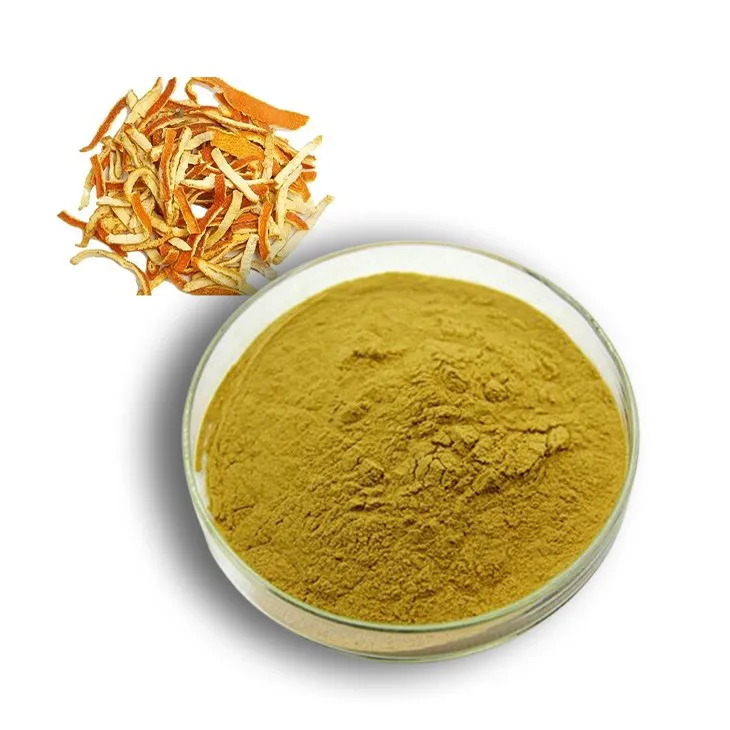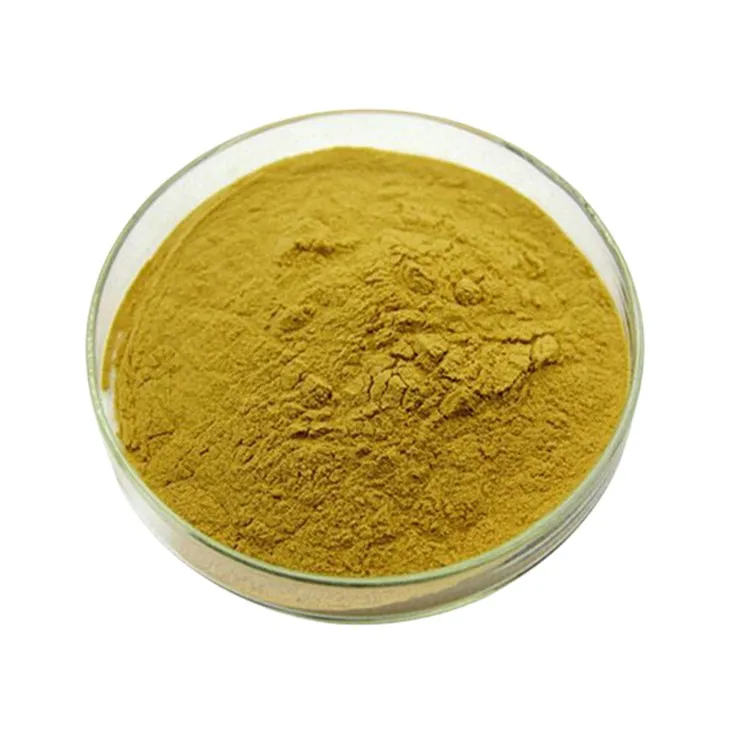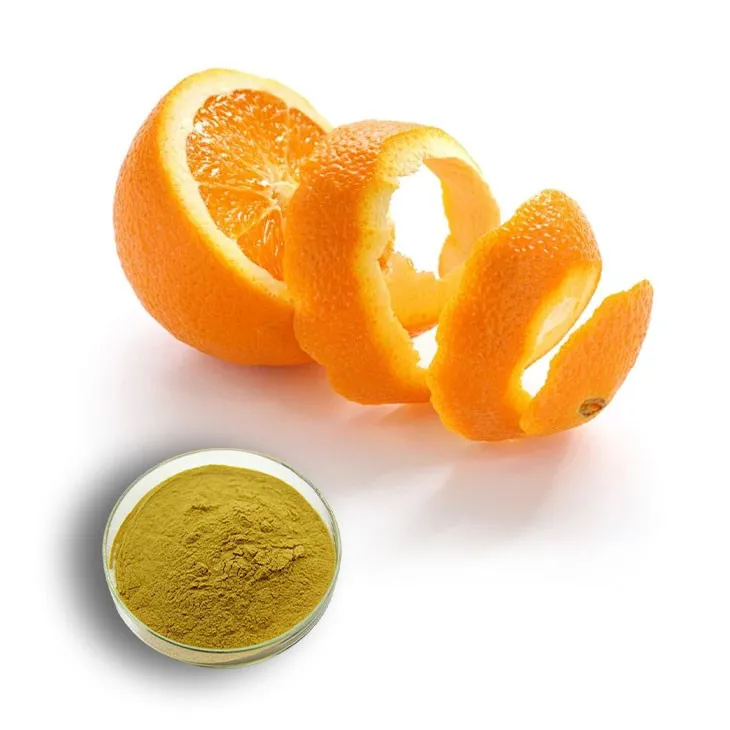- 0086-571-85302990
- sales@greenskybio.com
The process of extracting high - purity hesperidin from hesperidin.
2024-11-26

1. Introduction
Hesperidin, a flavonoid compound, has been the focus of much research due to its numerous potential health benefits. It is found in various natural sources, with citrus peels being a particularly rich source. The extraction of high - purity Hesperidin from Hesperidin - containing materials is a complex yet important process, as high - purity hesperidin has great value in applications such as medicine, cosmetics, and food industries.

2. Selection of Raw Materials
2.1 Importance of Raw Material Quality
The quality of the raw material is crucial in the extraction process of high - purity hesperidin. Citrus peels are a common choice as they are rich in hesperidin. However, the type of citrus, the ripeness of the fruit, and the processing conditions of the peels can all affect the hesperidin content and the ease of extraction. For example, oranges are a popular source, but lemon and grapefruit peels may also be used. The ripeness of the citrus fruit can influence the concentration of hesperidin in the peel. Generally, ripe fruits tend to have a relatively stable and higher hesperidin content.2.2 Pretreatment of Raw Materials
Once the appropriate raw materials are selected, pretreatment is necessary. This typically involves cleaning the citrus peels to remove any dirt, pesticides, or other contaminants. After cleaning, the peels are often dried to reduce moisture content. Drying can be carried out using methods such as air drying or low - temperature drying. This step helps to preserve the hesperidin content and prepares the peels for the subsequent extraction process.
3. Solvent Extraction
3.1 Choice of Solvents
Solvent extraction is the first major step in isolating hesperidin from the raw materials. Ethanol and methanol are commonly used solvents due to their ability to dissolve hesperidin effectively. Ethanol is often preferred in many applications because it is less toxic and more environmentally friendly compared to methanol. However, methanol may offer better extraction efficiency in some cases. The choice of solvent also depends on factors such as cost, availability, and the desired purity of the final product.3.2 Extraction Conditions
The extraction conditions play a vital role in the efficiency of hesperidin extraction. Parameters such as solvent concentration, extraction time, and temperature need to be optimized. For example, a higher solvent concentration may lead to a higher extraction yield, but it may also extract more impurities. The extraction time should be long enough to ensure sufficient extraction of hesperidin but not so long as to cause degradation of the compound. Temperature also affects the solubility of hesperidin in the solvent. A moderate temperature is usually preferred to balance extraction efficiency and product quality.3.3 Filtration
After the solvent extraction, the resulting mixture needs to be filtered. Filtration helps to separate the solid residues from the solvent - containing hesperidin extract. This can be achieved using various filtration methods, such as vacuum filtration or filter paper filtration. The filtered extract contains hesperidin along with other dissolved substances and is then ready for further purification.
4. Purification Techniques
4.1 Chromatography
- Chromatography is a powerful purification technique for obtaining high - purity hesperidin. There are different types of chromatography that can be used, such as column chromatography and high - performance liquid chromatography (HPLC).
- In column chromatography, a column is filled with a stationary phase, and the hesperidin - containing extract is passed through the column. Different components in the extract interact differently with the stationary phase, allowing for the separation of hesperidin from other substances. The choice of stationary phase and mobile phase is critical in achieving effective separation.
- HPLC is a more advanced form of chromatography. It offers higher resolution and faster separation times. In HPLC, the hesperidin extract is pumped through a column under high pressure, and the separation is monitored using a detector. The purity of the hesperidin obtained can be accurately controlled and measured using HPLC.
4.2 Crystallization
- Crystallization is another important purification method. After the chromatographic purification, the hesperidin - rich solution may be subjected to crystallization. Crystallization involves reducing the solubility of hesperidin in the solution, causing it to form crystals.
- The solubility of hesperidin can be reduced by methods such as evaporation of the solvent or changing the temperature. For example, cooling the solution can often lead to the formation of hesperidin crystals. The crystals are then separated from the mother liquor by filtration or centrifugation.
- The purity of the hesperidin crystals can be further improved by repeated crystallization steps. This helps to remove any remaining impurities that may be trapped within the crystal lattice.

5. Characterization and Quality Control
5.1 Characterization of High - Purity Hesperidin
Once the high - purity hesperidin is obtained, it is necessary to characterize it to confirm its identity and purity. Techniques such as spectroscopy can be used. For example, infrared spectroscopy (IR) can provide information about the functional groups present in hesperidin, while nuclear magnetic resonance (NMR) spectroscopy can give detailed structural information. Mass spectrometry can be used to determine the molecular weight and purity of hesperidin.5.2 Quality Control
Quality control is essential to ensure that the high - purity hesperidin meets the required standards for its intended applications. This includes testing for purity, solubility, and stability. Purity can be determined using chromatographic and spectroscopic methods as mentioned above. Solubility tests are carried out to ensure that the hesperidin can be effectively incorporated into products such as pharmaceuticals or cosmetics. Stability tests are also important, especially when considering the long - term storage and use of hesperidin - containing products.6. Conclusion
The extraction of high - purity hesperidin from hesperidin - containing materials is a multi - step process that involves careful selection of raw materials, solvent extraction, and purification techniques. Each step is crucial in obtaining a high - quality product that can be used in various industries. With the increasing demand for natural and bioactive compounds like hesperidin, continuous research and improvement in the extraction process are necessary to ensure its efficient production and wide - ranging applications.
FAQ:
What are the common raw materials for hesperidin extraction?
Citrus peels are among the common raw materials rich in hesperidin for extraction. These are readily available sources that contain a significant amount of hesperidin which can be further processed to obtain the desired compound.
Why are ethanol and methanol used in the solvent extraction step?
Ethanol and methanol are effective solvents in the initial extraction of hesperidin. They have the ability to dissolve hesperidin and separate it from other components in the raw materials. These solvents are chosen due to their chemical properties which make them suitable for extracting flavonoids like hesperidin.
How does chromatography contribute to purifying hesperidin?
Chromatography is a powerful purification technique for hesperidin. It works on the principle of differential separation based on the chemical and physical properties of the components in a mixture. In the case of hesperidin purification, it can separate hesperidin from impurities based on factors such as molecular size, polarity, and charge, resulting in a higher - purity product.
What is the role of crystallization in obtaining high - purity hesperidin?
Crystallization is an important step in obtaining high - purity hesperidin. After the initial separation and partial purification, crystallization helps to further purify hesperidin. As the solution cools or the solvent evaporates, hesperidin forms crystals, leaving behind impurities in the remaining solution, thus increasing the purity of the final product.
What are the potential applications of high - purity hesperidin in the food industry?
In the food industry, high - purity hesperidin can be used as a natural antioxidant, which helps to prevent food spoilage and extend shelf life. It can also be added to functional foods due to its potential health - promoting properties, such as its antioxidant and anti - inflammatory effects.
Related literature
- Hesperidin: A Review on Its Pharmacological and Analytical Aspects"
- "Isolation and Purification of Hesperidin from Citrus Peel: A Comprehensive Study"
- "The Role of Hesperidin in the Cosmetic and Pharmaceutical Industries: An Update"
- ▶ Hesperidin
- ▶ citrus bioflavonoids
- ▶ plant extract
- ▶ lycopene
- ▶ Diosmin
- ▶ Grape seed extract
- ▶ Sea buckthorn Juice Powder
- ▶ Beetroot powder
- ▶ Hops Extract
- ▶ Artichoke Extract
- ▶ Reishi mushroom extract
- ▶ Astaxanthin
- ▶ Green Tea Extract
- ▶ Curcumin Extract
- ▶ Horse Chestnut Extract
- ▶ Other Problems
- ▶ Boswellia Serrata Extract
- ▶ Resveratrol Extract
- ▶ Marigold Extract
- ▶ Grape Leaf Extract
- ▶ blog3
- ▶ blog4
-
Bulk purchase of lily extract.
2024-11-26
-
Bulk purchase of yam extract.
2024-11-26
-
Organic Lycopene Powder Factory.
2024-11-26
-
Bulk purchase of astaxanthin.
2024-11-26
-
Alisma Extract
2024-11-26
-
Bamboo Leaf extract
2024-11-26
-
Lavender Extract
2024-11-26
-
Green coffee bean Extract
2024-11-26
-
Tongkat Ali Extract Powder
2024-11-26
-
Jujube Extract
2024-11-26
-
Marigold Extract
2024-11-26
-
Wheat Germ Extract
2024-11-26
-
Polygonum Cuspidatum Extract
2024-11-26
-
Centella Asiatica Extract
2024-11-26





















